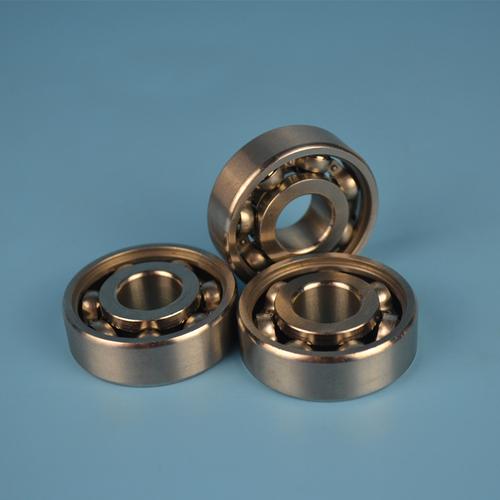Ceramic Hybrid Bearings Price and Suppliers: A Complete Guide to Costs, Benefits, and Top Providers
Ceramic hybrid bearings combine ceramic balls with steel races to deliver superior performance in high-speed, high-temperature applications. These precision components reduce friction, extend lifespan, and minimize maintenance costs compared to traditional bearings. This guide examines pricing factors, supplier selection criteria, and industry-specific solutions for businesses seeking reliable ceramic hybrid bearing solutions.
Table of Contents
1. ceramic hybrid bearings price comparison 20242. top ceramic bearing suppliers worldwide
3. advantages of hybrid ceramic bearings
4. ceramic bearings for industrial applications
5. how to choose ceramic bearing suppliers
1. Ceramic Hybrid Bearings Price Comparison 2024

Current market prices for ceramic hybrid bearings range from $50 to $500 per unit, depending on size, precision grade, and material composition. Industrial-grade bearings with ABEC 7 certification typically cost between $200-$400, while standard sizes (e.g., 608ZZ) start at $85. Prices vary significantly between suppliers due to manufacturing processes – hot isostatic pressing (HIP) bearings command 30% premiums over conventional models. Bulk purchases (100 units) often secure 15-25% discounts. Leading manufacturers like Boca Bearing and SKF maintain stable pricing structures, while emerging Asian suppliers offer competitive rates 20-40% lower. Thermal stability ratings (up to 300°C) and corrosion resistance specifications directly impact final costs. Request detailed quotes specifying: dimensional tolerances (±0.0001" max), radial play (C3/C4 clearance), and lubrication requirements (dry-run capable vs grease-packed).
2. Top Ceramic Bearing Suppliers Worldwide
Boca Bearing Company dominates the North American market with ISO 9001-certified hybrid bearings featuring silicon nitride balls. European leader SKF offers customized solutions with ZrO2 ceramics for food-grade applications. Japanese manufacturer NSK excels in ultra-high-speed bearings (DN值超过2.2 million) for aerospace applications. Emerging suppliers from China (HCH Bearing, Lily Bearing) provide cost-effective alternatives with lead times under 3 weeks. Verify supplier credentials: check ISO 14644-1 cleanroom certifications for contamination control, and request material composition reports (ASTM F2094 compliance). Top-tier suppliers provide: 3D CAD models, dynamic load rating calculations, and failure mode analysis reports. Evaluate shipping terms – DDP (Delivered Duty Paid) arrangements prevent unexpected customs charges.
3. Advantages of Hybrid Ceramic Bearings
Hybrid ceramic bearings demonstrate 3-5x longer service life than all-steel counterparts in contaminated environments. Electrical insulation properties prevent arcing in motors (up to 3kV/mm dielectric strength). 60% lighter ceramic balls reduce centrifugal force at high RPMs, enabling 20-40% speed increases. Thermal expansion coefficients (8.6×10⁻6/°C for Si3N4 vs 11×10⁻6/°C for steel) minimize preload variations. Field tests show: 92% friction reduction in oil-free applications, 35°C lower operating temperatures in sealed assemblies, and 80% lower lubricant consumption. Medical-grade hybrids with PEEK cages operate in sterilization autoclaves (135°C steam, 100 cycles).
4. Ceramic Bearings for Industrial Applications
In CNC machining centers, hybrid bearings maintain ≤2μm runout at 20,000 RPM spindle speeds. Food processing equipment benefits from FDA-compliant ceramics resistant to acidic cleaning agents. Wind turbine pitch controls utilize hybrids with -40°C to 150°C operational ranges. Semiconductor robots require vacuum-rated bearings (10⁻8 Torr) with outgassing rates <0.1% TML. Magnetic resonance imaging (MRI) systems use non-magnetic ZrO2 bearings to prevent image distortion. Automotive applications include turbochargers (180,000 RPM capability) and EV traction motors. Always match bearing specifications to application demands: consider axial/radial load ratios (dynamic load ratings ≥10kN for heavy machinery), required stiffness (contact angle 15° vs 25° designs), and environmental factors (IP68 sealing for washdown areas).
5. How to Choose Ceramic Bearing Suppliers
Evaluate suppliers through technical questionnaires covering: material traceability (batch-specific material certificates), quality control processes (automated optical inspection systems), and testing capabilities (ABMA Std 12.1 compliance). Request samples for accelerated life testing – conduct 72-hour endurance runs at 1.2x rated load. Check financial stability via credit reports – suppliers with 10 years operation preferred. Negotiate warranty terms: look for 2-year coverage against manufacturing defects. Audit manufacturing facilities virtually via live video tours – confirm cleanroom classifications (ISO Class 7 or better). Compare logistics networks: regional warehouses enable emergency 48-hour deliveries. Use escrow payments for first-time orders over $5,000. Develop long-term partnerships through frame agreements with price protection clauses.
This comprehensive guide addresses critical aspects of ceramic hybrid bearing procurement – from cost analysis to technical specifications. The following sections provide actionable strategies for comparing supplier quotations, interpreting technical datasheets, and optimizing maintenance schedules. Discover how proper bearing selection can reduce energy consumption by up to 18% in rotating equipment while extending mean time between failures (MTBF) by 40%.
Ceramic hybrid bearings represent a strategic investment for industries prioritizing reliability and efficiency. By understanding price determinants, supplier capabilities, and application-specific requirements, engineers can specify optimal bearing solutions. Partnering with certified suppliers ensures access to advanced materials and engineering support, ultimately delivering superior operational performance and lifecycle cost savings.




 13869596835
13869596835